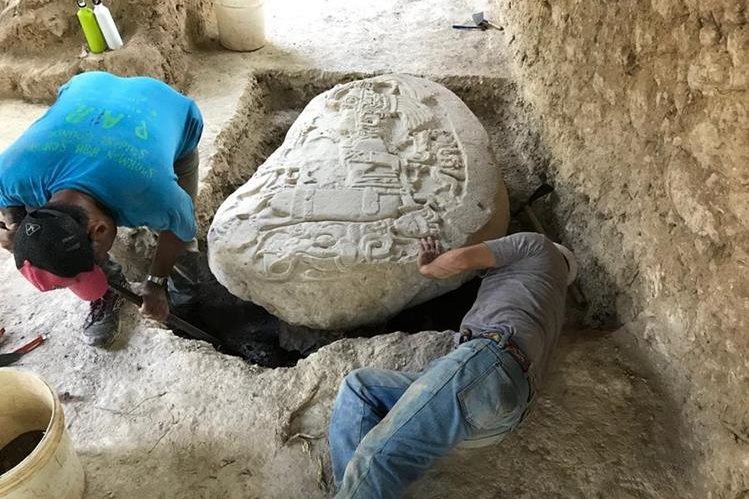An altar estimated to be around 1,500 years old was discovered in a small archaeological site in northern Guatemala, showing the political ambitions of the Mayan king’s dynasty of Kaanul to control the entire region, similar to the popular television series ‘Game of Thrones’.
The limestone altar, weighing almost a ton, was found at the La Corona archaeological site in the jungle of Petén, on the border with Mexico and Belize, Tomás Barrientos, co-director of the project that carries out the excavations and investigations, told reporters.
Barrientos, in presenting the discovery, explained that the altar was found in a temple and shows King Chak Took Ich’aak, ruler of the Crown, “sitting and holding a scepter from which two patron gods of the city emerge.”
The piece is 1.46 meters long by 1.20 wide and contains an inscription in Mayan hieroglyphics of a date corresponding to May 12, 544 AD. According to previous research based on other discoveries, it is known that the same king ruled the nearby city of El Perú-Waka.
This is evidence that the Lords of Kaanul or the Kingdom of the Serpent developed a political movement in La Corona that led them to defeat their “archrivals” of Tikal in 562 AD and to rule the Maya lowlands, in the southeast of Mesoamerica, for almost two centuries.
“The altar shows a part of the history of Guatemala and in this case, about 1 500 years ago, I’d say is the version of Game of Thrones of Maya history”, Barrientos said, comparing Kaanul’s strategies with the medieval fantasy television series about noble families disputing the control of seven kingdoms.
Barrientos mentioned that with the discovery of the altar, “they fill gaps” and “putting together the puzzle” of the political relations of the Mayan culture.
The altar “is a work of art of very high quality that shows us that they are rulers who were entering a time of great power and who are joining with each other to compete in this case with Tikal,” he added.
He explained that in La Corona “it was the place where the most important political movement took place in Mayan history.”
The Kingdom of the Serpent expanded from its capital Dzibanche, close to what is now northern Guatemala, Belize and the Mexican state of Campeche. After ruling the Petén for 200 years, they were finally defeated by the Lords of Tikal.
“Having information about what happens next, how they are plotting a political strategy here, teaches us a lot about what politics was like at that time and what the fight for the territories was like,” Barrientos said.
The Regional Archaeological Project, La Corona, is located in the remote Mayan Biosphere Reserve. The region is constantly threatened by looting, invasions and the incursion of organized crime such as drug trafficking and illegal livestock, threatening pre-Columbian monuments.
The deputy minister of Culture of Guatemala, Gladys Palala, said that the authorities seek to counteract the advance of the criminal groups that besiege Petén, an area “plagued by archaeological remains”.
The Mayan culture had its greatest splendor in the so-called classical period (250-900 AD) until it went into decline in the post-classical period (900-1200 AD).
An altar estimated to be around 1,500 years old was discovered in a small archaeological site in northern Guatemala, showing the political ambitions of . . .












